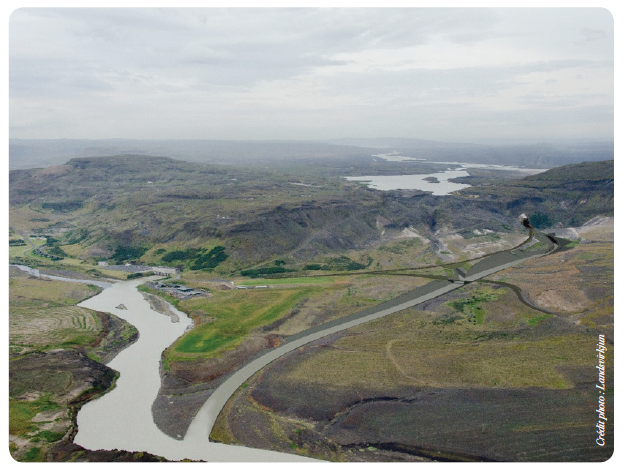In collaborative research with other Nordic governments and research agencies as part of the group Norden, Landsvirkjun uses hydrological modelling to project future water flow, taking climate change impacts into consideration. Projections on future river flow were improved through use of observed temperature and precipitation data, and glacier area-volume-elevation curves were adjusted according to trends from climate model simulations. This information was then fed into a hydrological model to produce corrected flows that account for climate change. Landsvirkjun incorporated corrected flows into its reservoir management strategies. The organisation updates the flow series, and following that its reservoir management, every five years to reflect changing climate conditions. For new design and the refurbishing of older plants, Landsvirkjun uses as a design specification that considers future flows within 15 years and beyond.
The corrected flow series of Landsvirkjun use data from IPPC as well as specific results for Iceland, such as the expected seasonal distribution of changes in temperature and precipitation. The flow series is further calibrated annually based on monitoring results. These findings are used for adjusting reservoir management and for assessing possible redesigns and upgrades of current power stations as well as proposals for future projects. In essence, the management and design of existing and planned assets is adjusted to take advantage of increased glacier flows, based on improved data on current and future flows. These measures result in an increased production of renewable energy in Iceland, because of reduced losses of water resources through spillways.
The Búrfell Hydropower Plant provides an example where improved water flow data made an expansion economically feasible: the power plant capacity was increased from 70MW to 100MW. Landsvirkjun decided to build a new hydropower plant, which extends the original power plant and reduces its load. The new Búrfell extension was built underground for economical and sustainability reasons; it is operational since June 2018. The Búðarháls Hydropower Plant is a new project commissioned in 2014. The capacity of that plant was increased from the originally planned 80 MW to 95 MW in response to climate change. The Hvammur Hydropower Project is a future project, where capacity has also been increased based on the corrected flows, from 82 MW to 95 MW. The Hvammur project has been approved by the Icelandic Parliament under the “Master Plan for Nature Protection and Energy Utilization” (see the section on legal aspects), but a decision to start construction has not been taken.



